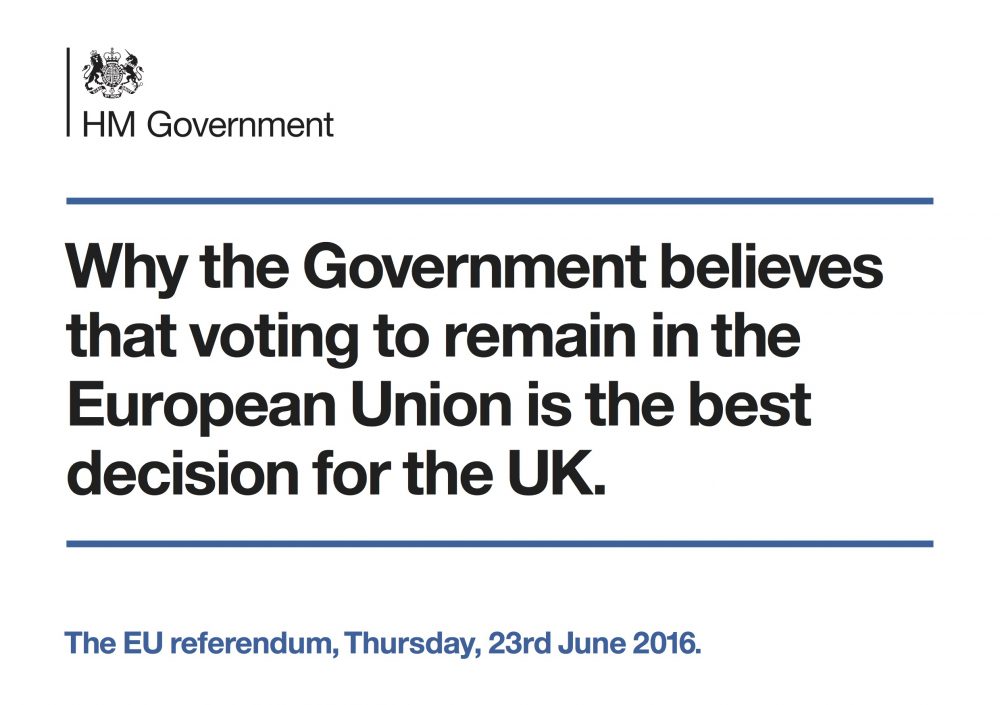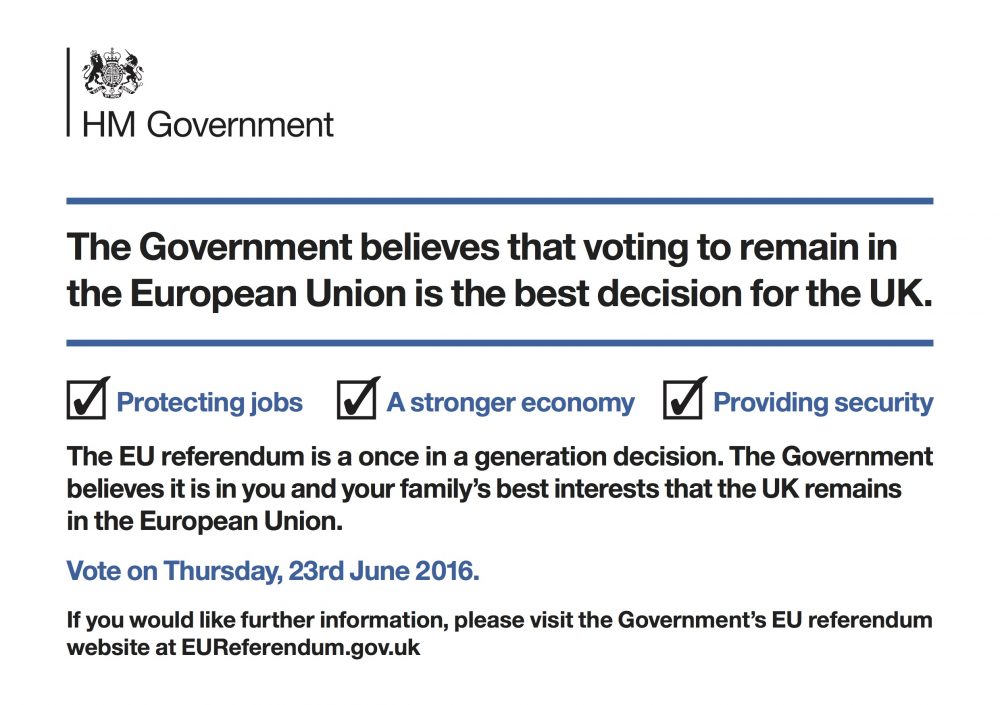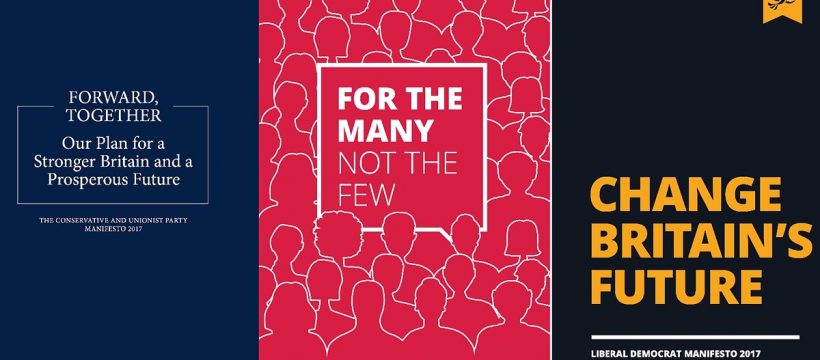Above 2017 General Election Manifestos
Every day we read about the worsening Brexit fiasco perpetrated by well paid people in Westminster. I thought it might be time to anchor what’s going on against some actual facts – they do exist! Let us look at how we got here.
#1. The results of the 2014 EU Parliament elections in the UK
At this election 35.6% of the UK electorate turned out to decide who our MEPs should be. The results for the biggest winners are below:
- UKIP 24 seats (+11)
- Labour 20 seats (+7)
- Conservative 19 seats (-7)
- Green 3 seats (+1)
- SNP 2
Here was concrete evidence that UKIP could win seats from the Conservatives, backing up doorstep conversations. It showed that UKIP was tapping into something that a section of the electorate had been thinking for years.
At the previous (2010) General Election David Cameron’s Conservatives had only got into power with the help of the Lib Dems 57 MPs. With the next UK election only a year away Cameron decided get aboard the anti-EU bandwagon.
#2. Referendum promised in 2015 Conservative Manifesto
You can read the Conservative 2015 election manifesto here. About 90% of the way through is the heading: Real change in our relationship with the European Union. Followed by:
Our commitment to you:
For too long, your voice has been ignored on Europe. We will:
- give you a say over whether we should stay in or leave the EU, with an in-out referendum by the end of 2017
- commit to keeping the pound and staying out of the Eurozone
- reform the workings of the EU, which is too big, too bossy and too bureaucratic
- reclaim power from Brussels on your behalf and safeguard British interests in the Single Market
- back businesses to create jobs in Britain by completing ambitious trade deals and reducing red tape.
Later come the words: “We will negotiate a new settlement for Britain in the EU. And then we will ask the British people whether they want to stay in on this basis, or leave. We will honour the result of the referendum, whatever the outcome.”
#3. Conservatives win majority in 2015 General Election.
The top 5 winning parties:
- Conservative: 331 seats (+24)
- Labour: 232 seats (-26)
- Scottish National Party: 56 seats (+50)
- Liberal Democrat: 8 (-49)
- Democratic Unionist Party: 8
UKIP only took 1 seat despite getting 12.6% of the votes.
So Cameron set about fulfilling his referendum promise.
#4. Parliament votes on legislation to hold the EU Referendum.
517 MPs voted to hold a referendum on our continued membership of the EU. Only 49 MPs voted against. You can see who voted for or against at the bottom of this web page. The Bill passed the Lords and received Royal Assent on 17th Dec 2015.
David Cameron announced that the referendum would take place on Thursday 23 June 2016. Then he set about trying to “reform the workings of the EU” and “reclaim power from Brussels”. As you all know he failed. He made one last trip to see Europe’s big boss in Berlin. As far as I’m concerned he was sent packing with a flea in his ear. Not much respect for being Europe’s 2nd biggest economy!
Cameron, did as he promised, and asked the British people to decide. So far so good, but then he took sides instead of remaining neutral.
#5. Cameron Backs Remain

Spending £9.3 million of public money David Cameron produced a 16 page leaflet headed, “Why the Government believes that voting to remain in the European Union is the best decision for the UK”. It was delivered to every household. This was criticised in the press at the time: Guardian, Daily Mail, Telegraph, Independent.
Cameron and Osborne also went round the country speaking to hundreds of groups of people. Cameron told them that Brexit would be an act of “economic self-harm”. A Treasury report said that British families will be between £2,600 and £5,200 a year poorer by 2030 if the country votes for Brexit. George Osborne said a Leave vote would cause an “immediate and profound” economic shock, with growth between 3% and 6% lower. But what actually happened was that the economy rose 0.5% in the 3 months following the vote, as normal.

It has been argued that people were duped into voting leave by the claim on the side of the bus – ”We send the EU £350 million a week let’s fund the NHS instead”. If the electorate is so naive how come they ignored all the warnings made by the Prime Minister and the Chancellor of the Exchequer?
#6. Britain votes to leave the EU on 23 June 2016
The result was 51.89% Leave, 48.11% Remain. 33,577,342 votes were cast. A quick check with my calculator shows that over a million more people chose to leaver the EU (1,269,223). David Cameron resigned immediately.
#7. Parliament votes to trigger Article 50
The European Union (Notification of Withdrawal) Act 2017 had its 3rd reading in the Commons on 8th Feb 2017. The Bill was passed by 494 to 122 votes. A letter was given to Donald Tusk on 29th March 2017, starting the two year process.
#8. Theresa May decides to hold an election
At Easter 2017 Theresa May announced a snap election. Believing opinion polls, she thought she could increase her majority, to enable her to get her to better get legislation though the Commons. What could possibly go wrong? It also enabled her to put some legally watertight Brexit stuff into her manifesto meaning that the Lords could not block it.
#9. Labour and Conservative Manifestos 2017
Both Labour and the Conservatives said they will accept the referendum result. These are the parties most of the electorate voted for in 2017.
On page 24 of the Labour Manifesto it says: ”Labour accepts the referendum result…”. But then they do qualify this with, “We will prioritise jobs and living standards, build a close new relationship with the EU, protect workers’ rights and environmental standards, provide certainty to EU nationals and give a meaningful role to Parliament throughout negotiations.” Labour gained 30 seats at the 2017 General Election.
Under the heading Leaving the European Union, the Conservative Manifesto said: “Following the historic referendum on 23rd June 2016, the United Kingdom is leaving the European Union. Only the Conservative Party, under Theresa May’s strong and stable leadership, can negotiate the best possible deal for our country”. The Conservative lost 13 seats leaving them with 317.
The Lib Dems said: ”…Liberal Democrats will fight to prevent a hard Brexit… we will put that deal to a vote of the British people in a referendum, with the alternative option of staying in the EU on the ballot paper. We continue to believe that there is no deal as good for the UK outside the EU as the one it already has as a member.” At the election the Lib Dems did not gain any more seats as a result of their opposition to Brexit. They were unchanged at 12 MPs.
#10. The UK economy is still doing OK
In today’s Times a piece by Mark Littlewood is headed: “Don’t overestimate the impact of political chaos on the economy.” In it he says: “Last week, the Office for National Statistics released figures showing wage growth at its highest for a decade. Estimated GDP growth for the last quarter is 0.6 per cent; hardly heroic, but measurable better than the eurozone average. Foreign direct investment into the UK was at a record high last year.”


